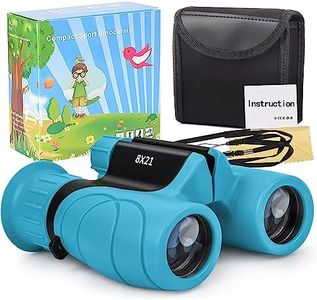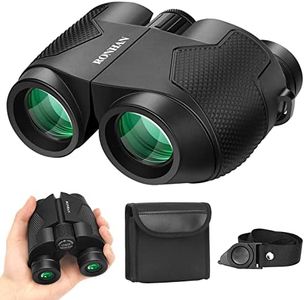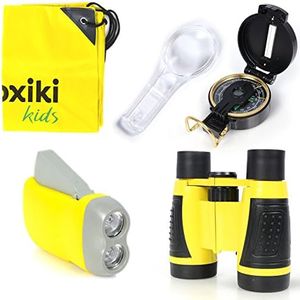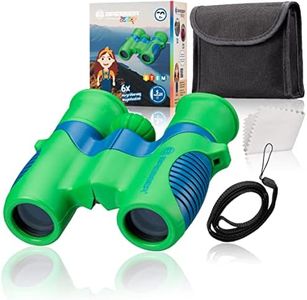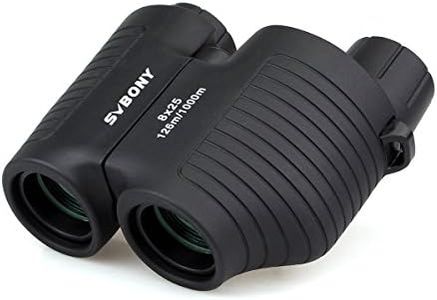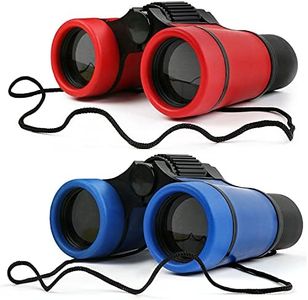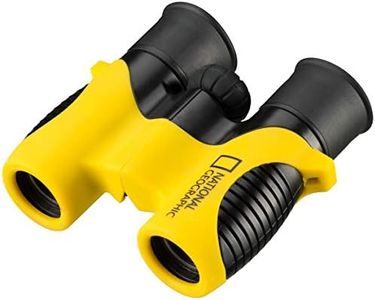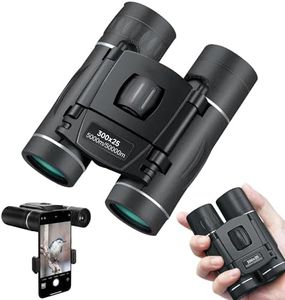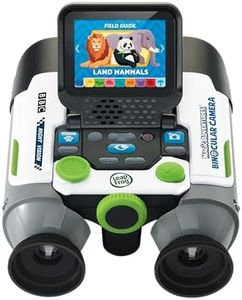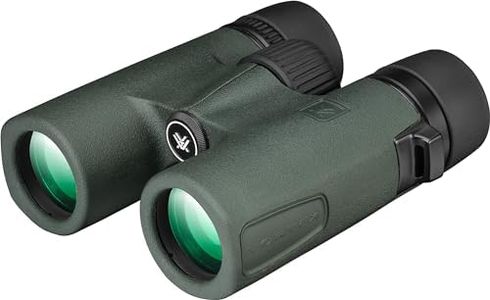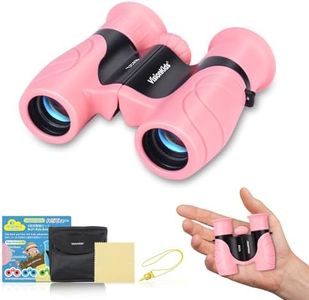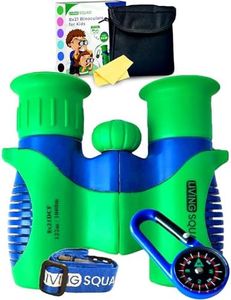We Use CookiesWe use cookies to enhance the security, performance,
functionality and for analytical and promotional activities. By continuing to browse this site you
are agreeing to our privacy policy
10 Best Kids Binoculars
From leading brands and best sellers available on the web.Buying Guide for the Best Kids Binoculars
Buying binoculars for kids is a fun way to open up their curiosity about the outdoors, wildlife, and exploring. When shopping for children's binoculars, it's important to focus on specs that ensure they are easy to use, lightweight, safe, and actually helpful for young adventurers. Unlike adult versions, kids' binoculars should be designed for small hands and faces, and should be robust enough to handle some bumps and drops. With a little guidance, picking the right binoculars can help kids learn, play, and make memories outdoors.MagnificationMagnification describes how much closer objects appear when you look through the binoculars. For kids, a lower magnification—generally between 6x and 8x—is best. Higher magnifications can be hard to hold steady without shaking, making the image blurry and frustrating. When choosing magnification, go for something on the lower side so kids can easily see and follow moving objects like birds or animals.
Objective Lens DiameterObjective lens diameter refers to the size of the front lenses, measured in millimeters. Larger lenses let in more light and give a brighter image, especially in dim conditions, but they also make the binoculars heavier. For kids, an objective lens diameter between 21mm and 32mm is ideal; it keeps the binoculars light and manageable while still letting in enough light for most daytime adventures.
Weight and SizeWeight and size are very important for kids' binoculars. Heavy or bulky binoculars are hard for kids to hold steady and may cause fatigue. Look for compact models that fit comfortably in small hands and are not too heavy to hang around the neck. Choose a size that matches your child's age and hand strength—the younger the child, the smaller and lighter the binoculars should be.
Field of ViewField of view means how wide an area you can see through the binoculars at once, usually measured in meters at a certain distance (like 1000 meters). A wider field of view makes it easier for kids to find and track objects in motion, such as birds or sports events. For young users, a wider field of view helps them focus on interesting sights without constantly adjusting or searching.
Durability and DesignKids' binoculars should be tough enough to withstand drops or rough handling. Features like rubber armor and shock resistance protect the binoculars and make them safer to use. Also, look for simple focusing mechanisms and eyepieces with soft rubber to keep them comfortable and safe for kids’ eyes and faces. Bright colors can also make them appealing and easier to find if dropped.
Ease of UseBinoculars should be straightforward for kids to operate. This means an easy-to-turn focus wheel, simple adjustments, and possibly even fixed-focus models for very young children. Complicated controls can be frustrating and discourage use, so choose binoculars appropriate for your child's age and coordination.
